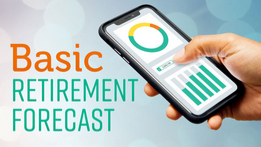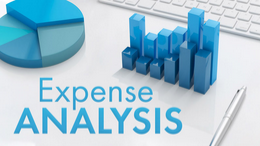Last Updated on January 11, 2025 by policyengineer
Last Updated: January 11th, 2025
Are You Sure You Will Have Enough To Retire?
Explore The Common Risks Why People End Up In Financial Distress
Retirement is a significant milestone in life, marking the transition from a career-driven lifestyle to a phase of relaxation and leisure. However, achieving a secure and stress-free retirement requires careful planning, especially in the face of various risks that can impact your financial stability. In this blog post, we’ll explore key steps to plan for a bulletproof retirement, taking into account different retirement timelines and potential risks.
Learn about the key steps to plan for a bulletproof retirement, taking into account different retirement timelines and potential risks.
How long will your money last in retirement?
- 1 Initial Amount: Enter the amount you currently have for retirement savings.
- 2 Monthly Spend: Specify the amount you plan to spend monthly during your retirement.
- 3 Annual Investment Return (%): Input the expected annual return on your investments.
Result:
Your money will last for X years in retirement.
Understanding Retirement Risks
1. Longevity Risk:
Living longer is a blessing, but it stretches your financial runway. The average American now lives to 78, and that number keeps climbing. Factor in your family history and lifestyle for a personalized estimate.
Example: Sarah, 45, with a family history of longevity, projects a potential lifespan of 85. This means she needs to plan for 40 years of retirement – not the traditional 20-30! Think groceries costing 40% more in 30 years due to inflation!
2. Market Risk:
Stocks can be turbulent, and retirees, especially those nearing retirement, can feel the bumps acutely. Diversification and strategic asset allocation are your anchors.
Example: John, 58, plans to retire in 5 years. He can weather short-term market dips by keeping 60% of his portfolio in bonds and stable-value funds, shifting towards growth assets as retirement approaches. Remember, the 2008 crash saw the S&P 500 lose 50% in a year, but recovered within 5 years.
3. Inflation Risk:
This silent thief slowly erodes your purchasing power. A dollar today won’t buy the same groceries in 30 years.
Example: Mary, 30, factors in an average 2% inflation rate when calculating her retirement expenses. This means she needs to save and invest enough to not only maintain her current lifestyle but also account for a loaf of bread potentially costing $8 in 30 years instead of today’s $2.
4. Healthcare Costs:
As we age, medical needs often increase. Planning for these expenses helps avoid scrambling later.
Example: David, 62, researches long-term care insurance options and secures a policy to cover potential future assisted living costs, giving him peace of mind and protecting his retirement savings. The average cost of a nursing home in the US today is $88,200 per year – imagine that figure in 30 years!
5. Social Security
While Social Security remains a crucial income source, its long-term future is subject to potential changes. Knowing when to file can greatly impact your retirement income.
Example: Sarah, aware of projected funding concerns, explores alternative income sources like annuities and considers delaying retirement to maximize her Social Security benefits. Remember, proactive planning can help mitigate uncertainties around Social Security.
6. Withdrawal Rate Risk
This risk arises from potentially taking out too much money from your retirement savings too soon, depleting your nest egg before the end of your lifespan.
Example: John, planning to withdraw 5% of his savings annually starting at 60, might face this risk if he lives longer than expected. By using sustainable withdrawal rate calculators and consulting financial advisors, he can adjust his withdrawal strategy to ensure his savings last throughout his retirement.
7. Legacy Risk
Have you thought about how your retirement spending could impact the financial legacy you leave to your loved ones or causes you care about?
This risk concerns leaving behind a financial legacy that aligns with your values and goals. Do you want to support loved ones? Fund charitable causes? Pass on wealth or build a self-sustaining legacy?
Example: Mary, passionate about environmental causes, factors in donations to specific organizations into her retirement plan. John, with children nearing college age, adjusts his investment strategy to include higher returns to cover potential education costs. By considering Legacy Risk early, you can design a plan that not only secures your own retirement but also fulfills your broader personal aspirations.
Tips and Strategies
Start Early:
Time is your magic multiplier. Compound interest works wonders; the earlier you start, the bigger your nest egg grows.
Example: Sarah, by starting at 45, can leverage compound interest to accumulate significantly more than if she started at 55, even with the same monthly contributions. Consider, $1,000 invested at 7% annual interest for 40 years balloons to over $118,000, compared to $70,000 for 20 years!
Diversify Wisely:
Spread your investments across a variety of areas to reduce risk. Consider allocating your funds to different sectors or industries rather than concentrating them in one.
Example: John’s retirement portfolio is diversified across various sectors to balance risk. He has invested in stable sectors alongside growth-oriented opportunities. Maintaining a balanced approach ensures resilience even during market fluctuations.
Secure Guaranteed Income:
Social Security and annuities provide a steady stream of income, reducing reliance on market returns.
Example: Mary maximizes her Social Security contributions and explores immediate fixed-rate annuities to guarantee a portion of her retirement income, giving her flexibility to invest the rest for growth. Think of Social Security as a guaranteed income floor, with your investments building the penthouse!
Build an Emergency Fund:
Life throws curveballs. Having a safety net of 3-6 months of living expenses prevents dipping into retirement savings during unexpected situations.
Example: David consistently builds his emergency fund through automatic transfers from his paycheck, ensuring he has a buffer for car repairs, job loss, or medical emergencies. Remember, unexpected expenses shouldn’t derail your retirement journey.
Regularly Review and Adapt:
Life changes, and so should your plan. Review your progress and adjust your strategies as needed based on market conditions, health changes, and evolving goals.
Health Insurance Planning: Secure comprehensive health insurance, and consider long-term care coverage for potential future needs.
Retirement Timing Considerations:
Tailor your strategies to your timeline. The steps you take at five years from retirement will differ from those you take 20 years out.
Retirement Timing Considerations
5 Years Before Retirement:
- Evaluate your current financial position.
- Assess your anticipated retirement expenses.
- Fine-tune your investment strategy for the short term.
10 Years Before Retirement:
- Increase contributions to retirement accounts.
- Reassess risk tolerance and adjust investments accordingly.
- Explore healthcare options and costs.
20 Years Before Retirement:
- Focus on long-term investment strategies.
- Update your retirement goals and expectations.
- Consider tax-efficient retirement savings strategies.
40 Years Before Retirement:
- Establish a comprehensive financial plan.
- Maximize contributions to retirement accounts.
- Explore early retirement possibilities.

By understanding your unique risks and implementing these proactive strategies, you can embark on a journey towards a bulletproof retirement, one that weathers life’s storms with confidence. Don’t be afraid to seek professional guidance from financial planners or investment advisors. Remember, a secure and fulfilling retirement is within your reach – make your golden years shine bright!
Personalizing Your Plan:
This journey should be customized to your individual circumstances. Take the time to:
- Assess your risk tolerance: Are you comfortable with market fluctuations, or do you prioritize stability?
- Define your financial goals: How much do you need to live comfortably in retirement?
- Consider your health circumstances: Do you have any existing health conditions or family history that might impact healthcare costs?
Resources for the Road Ahead:
Numerous resources can help you build your personalized retirement plan:
- Financial planning tools: Manage your budget, investments, and debts.
- Government websites: Access information on Social Security, Medicare, and other benefits.
- Financial advisors: Seek professional guidance tailored to your unique situation.
Estimate How Much You Will Need In The Future
-
Current Annual Expenses:
- Enter your current annual expenses. This should represent your present yearly spending.
-
Average Inflation Rate:
- Input the average inflation rate (in percentage) in the “Average Inflation Rate (%)” field. This reflects the expected annual increase in prices. The average inflation rate for the past 10 years is 2.65%.
- Input the average inflation rate (in percentage) in the “Average Inflation Rate (%)” field. This reflects the expected annual increase in prices. The average inflation rate for the past 10 years is 2.65%.
-
Years Into the Future:
- Specify the number of years into the future you want to plan for in the “Years Into the Future” field. This could be the duration until your retirement or any future financial goal.
-
Click “Calculate”:
- Hit the “Calculate” button to see the estimated future expenses and the corresponding savings needed.
-
Review Results:
- The calculator will display the estimated future expenses and the required savings to cover those expenses.
Result:
Your estimated future expenses will be $X.
You will need savings of $X to cover future expenses.
Frequently Asked Questions
-
Q: When should I start planning for retirement?
- A: The earlier, the better. Ideally, start planning in your 20s or 30s. However, it’s never too late to begin; the key is to start as soon as possible.
-
Q: How much money do I need to retire comfortably?
- A: The amount varies based on your lifestyle, expenses, and retirement goals. A common rule of thumb is to aim for 70-80% of your pre-retirement income.
-
What role does Social Security play in retirement planning?
- A: Social Security can be a valuable income source in retirement. It’s essential to understand your projected benefits and factor them into your overall retirement plan. This all depends on your desired lifestyle in retirement. Income needs can vary.
-
Q: How do I determine my risk tolerance for investments in retirement?
- A: Consider factors like your time horizon, financial goals, and comfort with market fluctuations. Consulting with a financial advisor can help assess and manage your risk tolerance.
-
Q: What is the 4% rule, and should I follow it?
- A: For years, the 4% rule has been considered the norm in retirement planning, advising individuals to withdraw 4% of their retirement savings annually. However, recent shifts in economic landscapes and market volatility have led to a reconsideration of this guideline. Enter the 2% rule, a more conservative approach to retirement withdrawals. With the 2% rule, retirees withdraw only 2% of their retirement savings annually, aiming to preserve capital and sustain a longer retirement horizon. This approach offers increased security and flexibility, ensuring that retirees have a more sustainable income stream amidst uncertain market conditions.
-
Q: How can I protect my retirement savings from market volatility?
- A: Diversify your investments, consider low-risk options, and have a well-balanced portfolio. Regularly review and adjust your investment strategy based on your risk tolerance.
-
Q: Is it possible to retire early, and what should I consider?
- A: Early retirement is possible with careful planning. Consider factors such as healthcare costs, the impact on Social Security benefits, and maintaining a sustainable income.
-
Q: How can I prepare for healthcare costs in retirement?
- A: Include healthcare expenses in your retirement budget. Explore options like Medicare, supplemental insurance, and long-term care coverage. Start building an emergency health fund.
-
Q: What steps can I take to catch up on retirement savings if I started late?
- A: Maximize contributions to retirement accounts, explore catch-up contribution options, and consider delaying retirement or working part-time during early retirement years.
-
Q: How often should I review my retirement plan?
- A: Regularly review your retirement plan at least annually or when significant life changes occur. Adjust your plan based on evolving goals, financial situations, and market conditions.
The information provided is for general informational purposes only and should not be considered professional tax or financial advice.
Start Planning With Our FREE Financial Freedom Navigation Tool: MyBlocks
- Financial Goal Setting
- Retirement Income Forecasting
- Budget & Expense Analysis
- And more!
Start with these featured Tools👇







